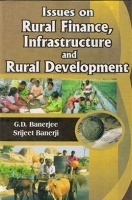Designed as a textbook for undergraduate students in various engineering disciplinesMechanical, Civil, Industrial Engineering, Electronics Engineer-ing and Computer Scienceand for postgraduate students in Industrial Engineering and Water Resource Management, this comprehensive and well-organized book, now in its Second Edition, shows how complex economic decisions can be made from a number of given alternatives. It provides the managers not only a sound basis but also a clear-cut approach to making decisions. These decisions will ultimately result in minimizing costs and/or maximizing benefits. What is more, the book adequately illustrates the concepts with numerical problems and Indian cases.
While retaining all the chapters of the previous edition, the book adds a number of topics to make it more comprehensive and more student friendly.
Whats New to This Edition
Discusses different types of costs such as average cost, recurring cost, and life cycle cost.
Deals with different types of cost estimating models, index numbers and capital allowance.
Covers the basics of nondeterministic decision making.
Describes the meaning of cash flows with probability distributions and decision making, and selection of alternatives using simulation.
Discusses the basic concepts of Accounting.
This book, which is profusely illustrated with worked-out examples and a number of diagrams and tables, should prove extremely useful not only as a text but also as a reference for those offering courses in such areas as Project Management, Production Management, and Financial Management.
Preface Preface to the First Edition
1. Introduction
2. Elementary Economic Analysis
3. Interest Formulas and Their Applications
4. Present Worth Method of Comparison
5. Future Worth Method
6. Annual Equivalent Method
7. Rate of Return Method
8. Replacement and Maintenance Analysis
9. Depreciation
10. Evaluation of Public Alternatives
11. Inflation Adjusted Decisions
12. Nondeterministic Decision Making
13. Cash Flows with Probability Distributions
14. Selection of Alternatives Using Simulation
15. Inventory Control
16. Make or Buy Decision
17. Project Management
18. Value Analysis/Value Engineering
19. Linear Programming
20. Basic Accounting Concepts
Appendices
References
Index


















